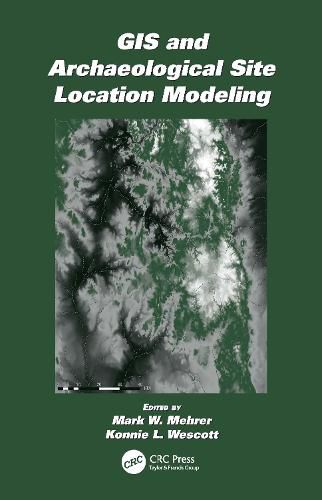Readings Newsletter
Become a Readings Member to make your shopping experience even easier.
Sign in or sign up for free!
You’re not far away from qualifying for FREE standard shipping within Australia
You’ve qualified for FREE standard shipping within Australia
The cart is loading…






Although archaeologists are using GIS technology at an accelerating rate, publication of their work has not kept pace. A state-of-the-art exploration the subject, GIS and Archaeological Site Location Modeling pulls together discussions of theory and methodology, scale, data, quantitative methods, and cultural resource management and uses location models and case studies to illustrate these concepts. This book, written by a distinguished group of international authors, reassesses the practice of predictive modeling as it now exists and examines how it has become useful in new ways.
A guide to spatial procedures used in archaeology, the book provides a comprehensive treatment of predictive modeling. It draws together theoretical models and case studies and explains how modeling may be applied to future projects. The book illustrates the various aspects of academic and practical applications of predictive modeling. It also discusses the need to assess the reliability of the results and the implications of reliability assessment on the further development of predictive models.
Of the books available on GIS, some touch on archaeological applications but few cover the topic in such depth. Both up to date and containing case studies from a wide range of geographical locations including Europe, the USA, and Australia, this book sets a baseline for future developments.
$9.00 standard shipping within Australia
FREE standard shipping within Australia for orders over $100.00
Express & International shipping calculated at checkout
Although archaeologists are using GIS technology at an accelerating rate, publication of their work has not kept pace. A state-of-the-art exploration the subject, GIS and Archaeological Site Location Modeling pulls together discussions of theory and methodology, scale, data, quantitative methods, and cultural resource management and uses location models and case studies to illustrate these concepts. This book, written by a distinguished group of international authors, reassesses the practice of predictive modeling as it now exists and examines how it has become useful in new ways.
A guide to spatial procedures used in archaeology, the book provides a comprehensive treatment of predictive modeling. It draws together theoretical models and case studies and explains how modeling may be applied to future projects. The book illustrates the various aspects of academic and practical applications of predictive modeling. It also discusses the need to assess the reliability of the results and the implications of reliability assessment on the further development of predictive models.
Of the books available on GIS, some touch on archaeological applications but few cover the topic in such depth. Both up to date and containing case studies from a wide range of geographical locations including Europe, the USA, and Australia, this book sets a baseline for future developments.